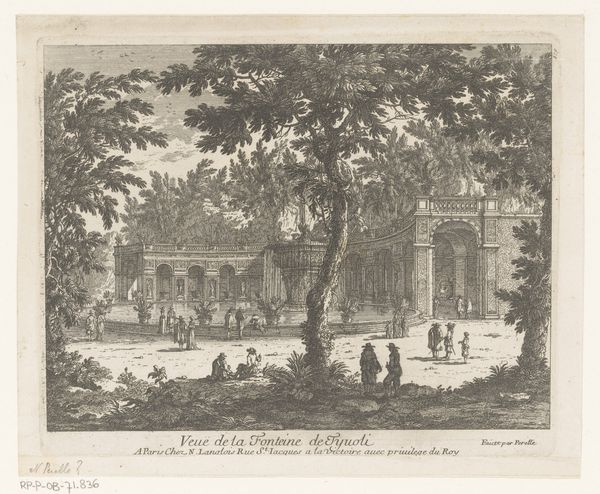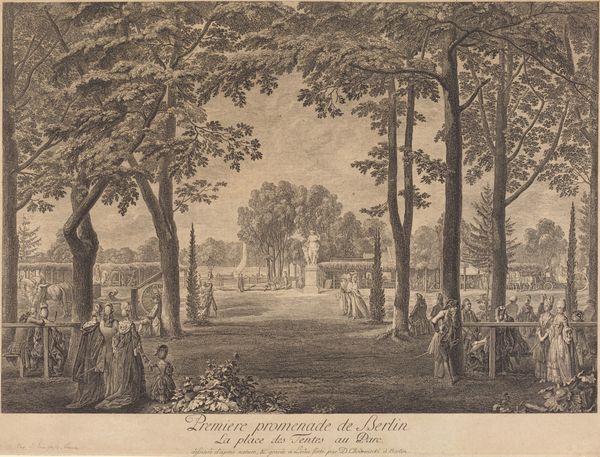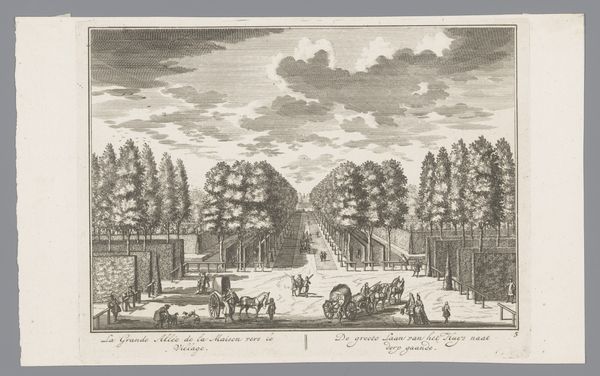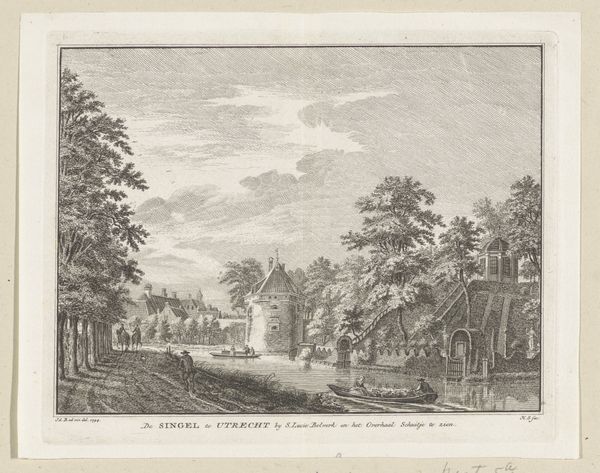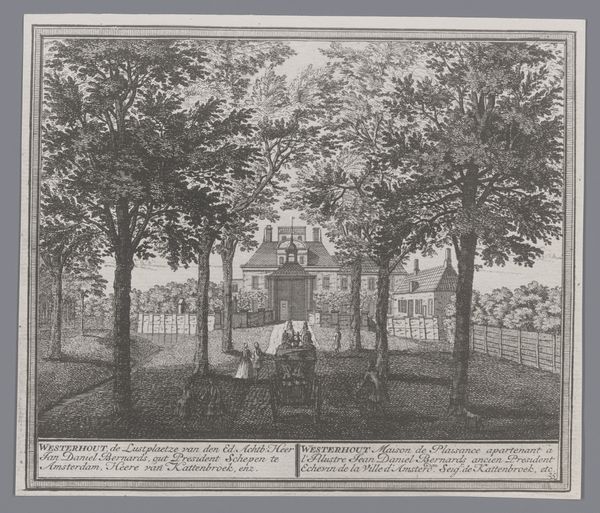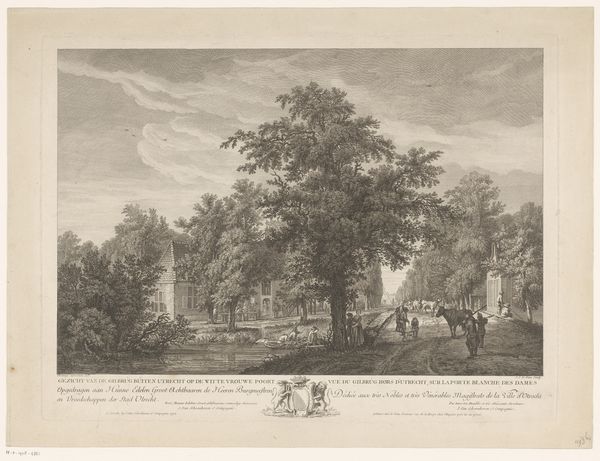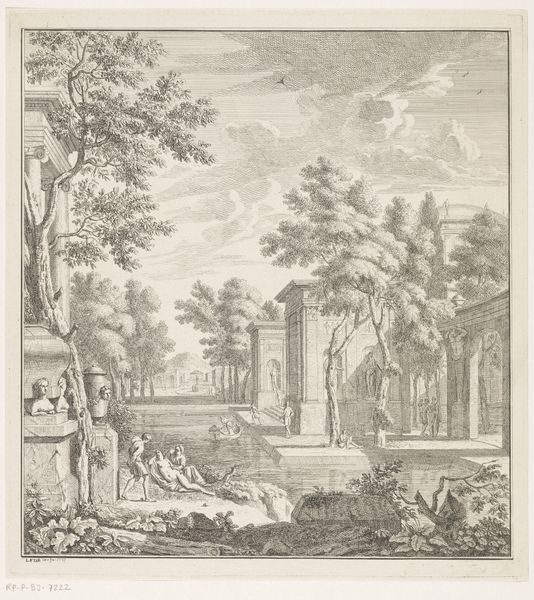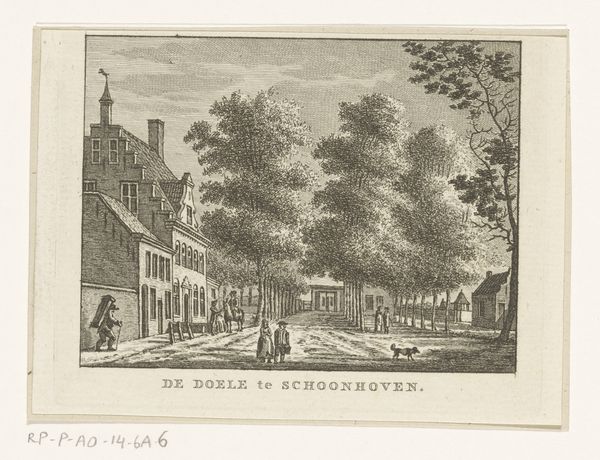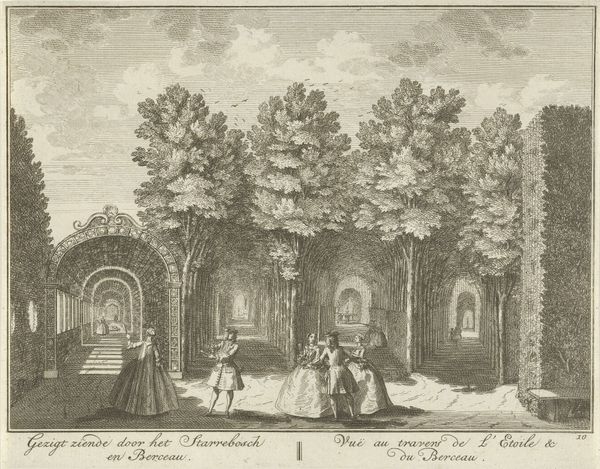
#
aged paper
#
light pencil work
#
mechanical pen drawing
#
pen sketch
#
pencil sketch
#
old engraving style
#
personal sketchbook
#
pen-ink sketch
#
pen work
#
pencil work
Dimensions: height 267 mm, width 411 mm
Copyright: Rijks Museum: Open Domain
Editor: This is "Gezicht op de Bosbrug te Den Haag" by Paulus Constantijn la Fargue, created in 1764. It seems to be a pen and ink drawing, maybe an engraving? It's quite detailed. It gives me a sense of calm, a quiet scene. What strikes you most about this piece? Curator: The historical context is compelling here. This image offers a glimpse into the urban development of The Hague in the 18th century. Consider the intended audience: prints like these were often commissioned to showcase civic improvements and promote a certain image of the city, one of order and progress. Does the image fulfill this function? Editor: Yes, it's orderly, but not grand or boastful, which makes me curious. It also focuses on everyday people. Curator: Precisely. It acknowledges their presence within this idealized urban landscape. Note how the composition carefully balances the built environment – the bridge and surrounding buildings – with nature. The interplay speaks volumes about the era's relationship with the natural world and how they are negotiated to modernize public spaces. Is there an aspect of that relationship that grabs your attention most? Editor: I see it too; I appreciate that even then, the public’s enjoyment of green space in an urban environment was prioritized. How does this imagery play into Dutch identity? Curator: In the Dutch Republic, landscape imagery wasn’t just about aesthetic pleasure. These vistas are frequently political: They spoke to national pride, trade, wealth, and power. Showing a well-managed, accessible urban space suggests a flourishing society under stable governance. Notice how even minor aspects, such as the clarity and definition in the sketch, communicate ideas about efficiency. What could these priorities tell us about who could enjoy these advancements? Editor: That makes a lot of sense. Seeing it through that lens, the image definitely projects power, though quietly. Thank you for explaining the social history interwoven in the imagery! Curator: Of course! Recognizing the intersection of art and politics broadens our comprehension of visual storytelling, doesn't it?
Comments
No comments
Be the first to comment and join the conversation on the ultimate creative platform.
